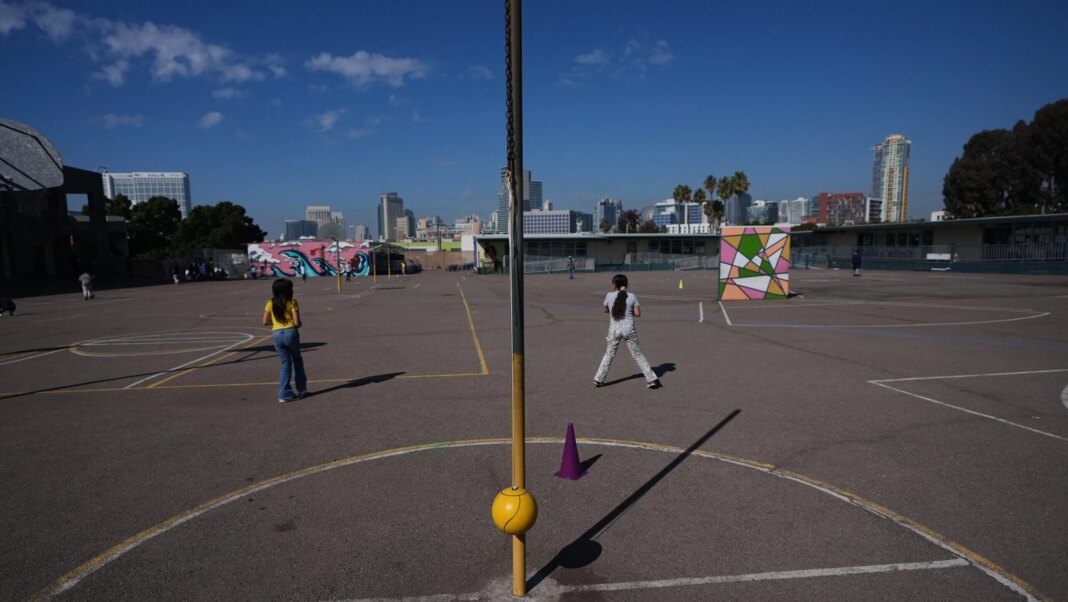Enrollment Declines: The Impact of Immigration Changes on U.S. Schools
A Nationwide Concern
Across the United States, from vibrant Miami to sunny San Diego, schools are grappling with significant drops in enrollment, particularly among students from immigrant families. This trend reflects broader immigration policy shifts, particularly during the Trump administration, which has led to deportations and heightened fears among immigrant communities.
In particular, many parents have faced deportation or have made the painful choice to return to their home countries, leaving their children behind. This has created a ripple effect, as fewer families are arriving from abroad, resulting in decreased enrollment numbers in schools throughout the country.
Notable Declines in Key Districts
The absence of immigrant students is starkly illustrated in Miami-Dade County Public Schools. This year, only about 2,550 students have enrolled from other countries, a sharp decline from nearly 14,000 last year and over 20,000 the year before. School board member Luisa Santos, a former immigrant student herself, described this situation as “a sad reality.” Santos explained how public schools provided her the opportunities she cherished, highlighting the emotional impact of this trend on both individuals and the community.
The budgetary implications of this drop are tremendous. Miami-Dade’s loss of enrollment translates to an estimated $70 million deficit in the district’s annual budget. Administrators are now scrambling to address this unexpected shortfall, which complicates planning for available resources and educational programs.
Local Economic Factors and Enrollment Patterns
In places like northern Alabama, economic growth has typically brought an influx of Hispanic families, drawn to the local poultry processing industry. However, even districts with growing Hispanic populations are struggling with enrollment. Bart Reeves, the Superintendent of Albertville City Schools, reported no new enrollments in his district’s newcomer academy, attributing this to the closure of the border. This loss is projected to reduce staffing, potentially eliminating 12 teaching positions as a direct result of decreased funding.
Self-Deportation: A Hard Decision
The circumstances leading to enrollment declines are deeply personal. Edna, a 63-year-old immigrant from El Salvador, found herself in a desperate situation when her friend was detained on immigration charges. As preparations were made for the friend’s children to come under her guardianship, Edna realized just how fragile their lives could become. Eventually, the children boarded a plane back to Guatemala, a heartbreaking decision made to keep them safe from potential deportation. Edna poignantly noted, “My house feels like a garden without flowers.” This real-life narrative underscores the emotional toll on families as they confront daunting immigration challenges.
Statistical Trends in Enrollment
The trend of declining immigrant enrollment is not isolated. School systems across the country are witnessing similar patterns. For example, Denver Public Schools saw a drop from 1,500 new immigrant students last summer to just 400 this year. The Waukegan Community Unified School District outside Chicago reported signing up 100 fewer newcomer students. Additionally, the Houston Independent School District had to close its dedicated Las Americas Newcomer School due to an enrollment plunge from 111 to merely 21 students.
In Chelsea, Massachusetts, a city noted for its immigrant population, the situation appears similarly bleak. Typically a haven for newcomers, this year’s enrollment included just 152 new students as opposed to 592 the previous summer, while the number of families withdrawing from the district has risen sharply.
The Emotional Toll on Students
Educators express deep concern for the social and emotional well-being of students amid these changes. In San Diego, Principal Fernando Hernandez has welcomed numerous newcomer students in previous years. However, as this school year begins, Hernandez notes that he hasn’t enrolled a single new immigrant student. The disruption is reminiscent of the isolation experienced during the pandemic, and the principal fears that students are missing vital opportunities for social development.
Natacha, a parent who moved with her family from Venezuela to California, shares similar anxieties about daily life. Despite the fear surrounding potential immigration enforcement, she continues to send her daughters to school, trying to maintain a semblance of normalcy. Her apprehension reflects a broader climate of fear permeating immigrant families, highlighting the complex interplay between educational access and security.
Uncertain Future
As schools navigate these challenging dynamics, stakeholders grapple with uncertain futures. The inevitable intersection of policy changes, family decisions, and community responses amplifies the already significant challenges faced by public education systems. The nuanced implications of decreasing enrollment on educational equity, budget allocations, and student well-being create a pressing need for comprehensive support and innovative solutions within the educational framework.



